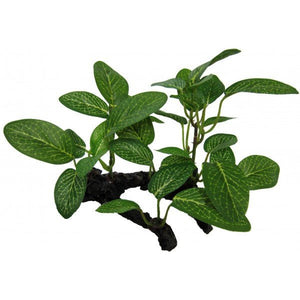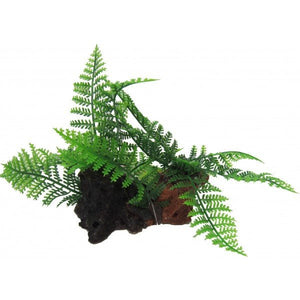{"id":7239425491041,"title":"Dendrelaphis pictus Snake Skeleton in a Frame","handle":"dendrelaphis-pictus-snake-skeleton-in-a-frame","description":"\u003cp\u003e\u003cstrong\u003eSpecies Name:\u003c\/strong\u003e\u003cspan\u003e \u003c\/span\u003eDendrelaphis pictus\u003c\/p\u003e\n\u003cp\u003e\u003cstrong\u003eCommon Name:\u003c\/strong\u003e\u003cspan\u003e \u003c\/span\u003ePainted Bronzeback Snake\u003c\/p\u003e\n\u003cp\u003e\u003cstrong\u003eOrigin:\u003c\/strong\u003e\u003cspan\u003e \u003c\/span\u003eIndonesia\u003c\/p\u003e\n\u003cp\u003e\u003cstrong\u003eSize: \u003c\/strong\u003e12\"x 14.5\" Black Shadow Box Frame\u003c\/p\u003e\n\u003cp\u003e\u003cstrong\u003eMade in Australia\u003c\/strong\u003e\u003c\/p\u003e\n\u003cp\u003eThe Painted Bronzeback Dendrelaphis pictus is a widespread and adaptable species occurring in a broad range of habitats. In its native habitat it is probably a forest edge species, as it is rarely encountered in dense forest. It has adapted to a broad range of disturbed and man-made habitats including secondary scrub, parks and gardens.\u003c\/p\u003e\n\u003cp\u003eIt is fully diurnal - by day it actively searches for its food prey, which comprises mainly lizards and frogs, but by night it rests on narrow tree branches a few metres above the ground.\u003c\/p\u003e\n\u003cp\u003eThis snake is nervous in disposition, and will flee swiftly when disturbed.\u003c\/p\u003e\n\u003cp\u003eThe top of its head is brown to bronze, and there is a black eye-stripe which extends along the neck and a short distance down the body. There is a cream and black stripe along the flanks. The larger, vertebral scales, which run along the full length of the body, may be brown or olive-grey.\u003c\/p\u003e\n\u003cp\u003eWhen threatened, or when consuming prey, this snake will inflate its body slightly to reveal bluish or turquoise skin underlying its body scales.\u003c\/p\u003e\n\u003cp\u003eIts head is slightly larger than its moderately slender body, and its eyes are large, typically with a brown iris.\u003c\/p\u003e\n\u003cp\u003eIt appears likely that Dendrelaphis pictus is a species complex - further studies will probably split the species into two or more separate species.\u003c\/p\u003e\n\u003cp\u003eThis wide-ranging snake ranges occurs in parts of India and southern China, Bangladesh, Burma, Thailand, Indochina (Vietnam, Laos, Cambodia), Peninsular Malaysia, Singapore, Sumatra, Java, Borneo, Sulawesi (and many smaller islands of eastern Indonesia) and the Philippines.\u003c\/p\u003e","published_at":"2024-12-10T12:56:51+11:00","created_at":"2024-12-10T12:56:52+11:00","vendor":"Newman Art Designs","type":"General","tags":["Taxidermy"],"price":22000,"price_min":22000,"price_max":22000,"available":true,"price_varies":false,"compare_at_price":null,"compare_at_price_min":0,"compare_at_price_max":0,"compare_at_price_varies":false,"variants":[{"id":41924816633953,"title":"Default Title","option1":"Default Title","option2":null,"option3":null,"sku":"14394","requires_shipping":true,"taxable":true,"featured_image":null,"available":true,"name":"Dendrelaphis pictus Snake Skeleton in a Frame","public_title":null,"options":["Default Title"],"price":22000,"weight":0,"compare_at_price":null,"inventory_management":"shopify","barcode":null,"requires_selling_plan":false,"selling_plan_allocations":[]}],"images":["\/\/jurassicjungle.com.au\/cdn\/shop\/files\/dendrelaphis-pictus-snake-skeleton-in-a-frame-771276.jpg?v=1733981279"],"featured_image":"\/\/jurassicjungle.com.au\/cdn\/shop\/files\/dendrelaphis-pictus-snake-skeleton-in-a-frame-771276.jpg?v=1733981279","options":["Title"],"media":[{"alt":"Dendrelaphis pictus Snake Skeleton in a Frame - Jurassic Jungle","id":28247328686177,"position":1,"preview_image":{"aspect_ratio":0.704,"height":727,"width":512,"src":"\/\/jurassicjungle.com.au\/cdn\/shop\/files\/dendrelaphis-pictus-snake-skeleton-in-a-frame-771276.jpg?v=1733981279"},"aspect_ratio":0.704,"height":727,"media_type":"image","src":"\/\/jurassicjungle.com.au\/cdn\/shop\/files\/dendrelaphis-pictus-snake-skeleton-in-a-frame-771276.jpg?v=1733981279","width":512}],"requires_selling_plan":false,"selling_plan_groups":[],"content":"\u003cp\u003e\u003cstrong\u003eSpecies Name:\u003c\/strong\u003e\u003cspan\u003e \u003c\/span\u003eDendrelaphis pictus\u003c\/p\u003e\n\u003cp\u003e\u003cstrong\u003eCommon Name:\u003c\/strong\u003e\u003cspan\u003e \u003c\/span\u003ePainted Bronzeback Snake\u003c\/p\u003e\n\u003cp\u003e\u003cstrong\u003eOrigin:\u003c\/strong\u003e\u003cspan\u003e \u003c\/span\u003eIndonesia\u003c\/p\u003e\n\u003cp\u003e\u003cstrong\u003eSize: \u003c\/strong\u003e12\"x 14.5\" Black Shadow Box Frame\u003c\/p\u003e\n\u003cp\u003e\u003cstrong\u003eMade in Australia\u003c\/strong\u003e\u003c\/p\u003e\n\u003cp\u003eThe Painted Bronzeback Dendrelaphis pictus is a widespread and adaptable species occurring in a broad range of habitats. In its native habitat it is probably a forest edge species, as it is rarely encountered in dense forest. It has adapted to a broad range of disturbed and man-made habitats including secondary scrub, parks and gardens.\u003c\/p\u003e\n\u003cp\u003eIt is fully diurnal - by day it actively searches for its food prey, which comprises mainly lizards and frogs, but by night it rests on narrow tree branches a few metres above the ground.\u003c\/p\u003e\n\u003cp\u003eThis snake is nervous in disposition, and will flee swiftly when disturbed.\u003c\/p\u003e\n\u003cp\u003eThe top of its head is brown to bronze, and there is a black eye-stripe which extends along the neck and a short distance down the body. There is a cream and black stripe along the flanks. The larger, vertebral scales, which run along the full length of the body, may be brown or olive-grey.\u003c\/p\u003e\n\u003cp\u003eWhen threatened, or when consuming prey, this snake will inflate its body slightly to reveal bluish or turquoise skin underlying its body scales.\u003c\/p\u003e\n\u003cp\u003eIts head is slightly larger than its moderately slender body, and its eyes are large, typically with a brown iris.\u003c\/p\u003e\n\u003cp\u003eIt appears likely that Dendrelaphis pictus is a species complex - further studies will probably split the species into two or more separate species.\u003c\/p\u003e\n\u003cp\u003eThis wide-ranging snake ranges occurs in parts of India and southern China, Bangladesh, Burma, Thailand, Indochina (Vietnam, Laos, Cambodia), Peninsular Malaysia, Singapore, Sumatra, Java, Borneo, Sulawesi (and many smaller islands of eastern Indonesia) and the Philippines.\u003c\/p\u003e"}

